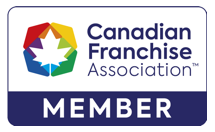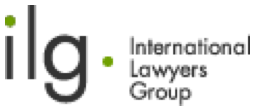Further to “Employers’ need to know obligations in face of pandemic,” it’s time for part two to develop a plan for action.
The fluidity of COVID-19 requires that businesses have a plan to deal with the evolving public health and safety directives. It is highly recommended that employers ensure they are communicating with their employees as to measures being taken and policies and practices put in place to address any concerns in the workplace.
In developing a contingency plan, considerations should be given to public health directives and the health and safety of your business (including your workers, clients, suppliers, etc.). In the current state of emergency, businesses may seriously contemplate a shutdown of physical spaces, where possible, and explore alternative and creative ways of doing business. To assist businesses in developing their contingency plan immediately and in the near future, considerations should be made to the following with a view to incorporating them into an action plan.
Promote preventative measures (recommended by World Health Organization)
- If possible practise minimizing social contact where possible and as suggested by public health directives. Large scale gatherings and meetings should be cancelled where possible until further notice from the government.
- Remind all business personnel to wash hands with an alcohol-based rub or soap and water frequently.
- Encourage business personnel and clients to practise social distancing (between one to two metres (three to six feet)) at the workplace and particularly with anyone sneezing or coughing.
- Advocate respiratory hygiene practices including covering your mouth with a bent elbow or tissue when you sneeze or cough and discard the tissue immediately at a nearby bin. Avoid using hands to cover your mouth when you sneeze or cough. If this occurs, remind employees to wash their hands immediately.
- Reinforce the message for employees to avoid touching eyes, nose and mouth.
- If an employee has a fever, cough or difficulty breathing, ask them to isolate or self-quarantine and encourage them to seek medical advice early and over the phone or video conferencing rather than in person if possible and appropriate. Communicate with employees.
- Issue daily communications that require employees to follow public directives and ensure your business messaging is in line with public directives.
- Appoint a point person or committee in your workplace to follow and communicate on COVID-19 updates and government directions.
- Establish a line of communication among leaders of the business and staff.
- Address business continuity and staffing plans in anticipation of increased absences.
- Provide regular updates on any changes to workplace practices and procedures, including reminders on alternative work arrangements and prevention strategies.
- Remind employees of their sick leave entitlements to ensure they feel comfortable using them and seeking accommodation where necessary.
- Develop alternative funding plans for employees where possible, including the use of employment insurance where appropriate with a potential top-up plan.
- Remind employees with respect to the travel advisories and restrictions mandated by the government.
- As travel restrictions ease, establish a protocol for employees to advise where they are travelling to on vacation or for personal reasons to ensure their safety.
- Ensure your employees are made aware of any directives to not report to the office well in advance to allow them to make plans to work remotely.
- Be sensitive and empathetic in all communications to employees on this matter.
Establish alternative work arrangements
- Consider temporary amendments to business policies and procedures on leaves, flexible work arrangements and remote working to ensure your employees feel protected and your business can continue to thrive.
- Remind employees of their sick leave entitlements pursuant to their employment contracts and job protected leaves pursuant to employment related legislation and ensure employees are aware that they will not be penalized.
- Establish an environment of protection and support for employees to ensure they feel comfortable to not report in to work if they feel ill or have any reason to suspect they may have been exposed to COVID-19.
- Ensure it is clear to all employees that if they have been diagnosed with COVID-19 or believe they have been exposed to someone with COVID-19 they should NOT report to the workplace and should follow public directives in this regard of isolation and self-quarantine.
- Quarantined employees should exercise the option to work remotely if that is possible or take a sick leave and apply for EI benefits if they are eligible. Alternatively, employers should be encouraged to review their paid sick leave policies in the face of COVID-19 with a view to ensure employees stay home and minimize exposure to others. Job security should be reinforced amidst COVID-19.
Promote health, wellness
In the event your business continues to operate at full capacity or a reduced capacity, ensure your employees are asked to stay home if they feel ill or have reason to believe they have been exposed to COVID-19 while ensuring them that their jobs are secure.
- Discourage requests for unnecessary visits to doctors or medical facilities requiring employees to obtain medical documentation to substantiate their stay at home. Medical notes will not be required for employees to justify their stay at home in the event the reasons are related to COVID-19.
- In the event business closures are in effect, ensure your business facilities are sanitized and cleaned if possible, to ensure a fresh start upon reopening.
- Healthy office hygiene practices should be implemented, including extra sanitization, availability of resources to ensure spaces are kept clean with additional garbage bins to discard tissues, paper towels and other cleaning supplies.
- Ensure that all personal health information obtained during this time is protected and not used in any way to penalize an employee. Caution should be taken with respect to human rights considerations and privacy obligations on the part of the employer.
- Check in with reporting employees to ensure they are feeling safe and nurtured.
Seek legal advice
It is recommended that employers seek legal advice with respect to any workplace matters, particularly if termination is contemplated. It is important for employers to document all steps taken by them to ensure their employees and their business are protected during this time of uncertainty and the evolving landscape. Employers should ensure contingency plan considerations are recorded, communications saved, amendments to policies and procedures noted with timeframes and individual consideration for accommodation requests detailed.
The team at Mills & Mills LLP is available and ready to assist with any inquiries, including developing a fluid COVID-19 contingency plan for the workplace.
This is part two of a two-part series. Part one: Employers’ need to know obligations in face of pandemic.
This article was originally published by The Lawyer’s Daily, part of LexisNexis Canada Inc.
At Mills & Mills LLP, our lawyers regularly help clients with a wide range of legal matters including business law, family law, real estate law, estate law, employment law, health law, and tax law. For over 130 years, we have earned a reputation amongst our peers and clients for quality of service and breadth of knowledge. Contact us online or at (416) 863-0125.

 2 St Clair Ave West
2 St Clair Ave West


